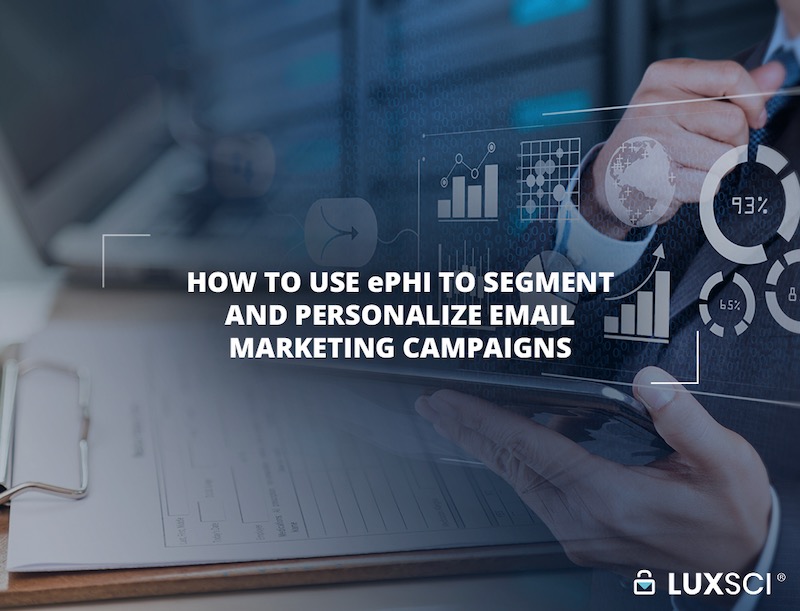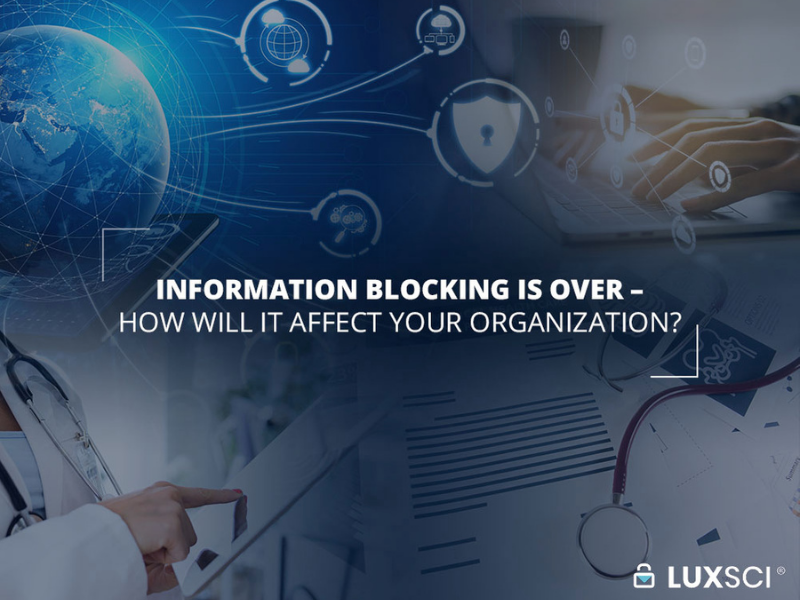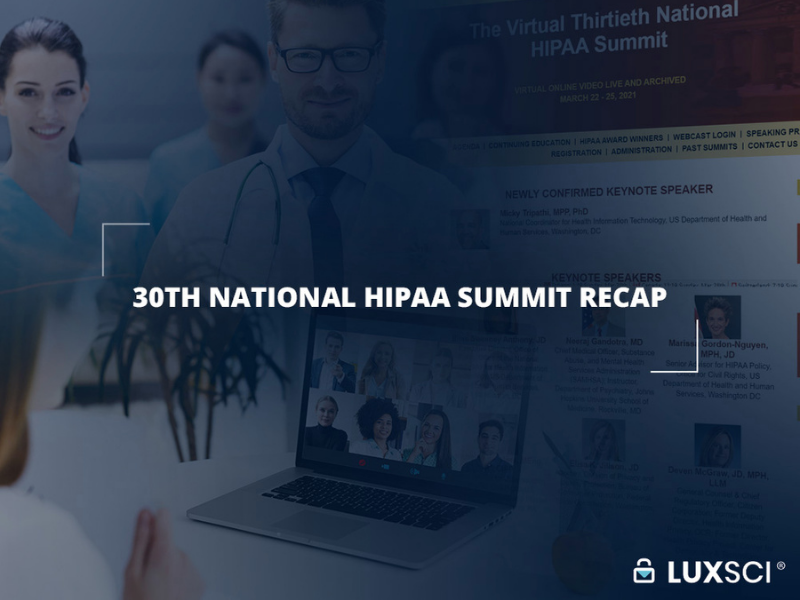Segmentation and personalization are powerful marketing tactics that are widely used across all industries. It is well-documented that marketers who send emails that are segmented and personalized experience much higher open and click rates. However, when healthcare marketers want to use these tactics, they must be aware of HIPAA! Any message that contains ePHI must be protected. In the past, these regulations made it difficult to send bulk marketing messages beyond generic office newsletters. However, using ePHI to segment and personalize marketing campaigns is possible!
To leverage patient data and create highly engaging and effective email campaigns that do not compromise security, marketers must use a HIPAA-compliant email marketing solution. We will walk you through how to use ePHI to segment and personalize healthcare marketing emails and improve your patient engagement.

How to Use ePHI to Segment Email Lists
Every campaign starts with identifying the target audience. When you use segmentation, you simply break down your email list into smaller subsets based on shared characteristics. The benefit of segmenting a list based on shared data is that you can adjust your messaging to speak more directly to that group of customers. When you are using a HIPAA-compliant marketing solution, you can segment your list using any data that you have from your patients (make sure you obtain appropriate permissions and opt-ins first!), including ePHI.
Ways to Segment lists using ePHI
Some examples of ways you can break down your lists using ePHI include:
- Demographic characteristics
- Geographic location
- Primary care provider
- Date of last visit
- Reason for last visit
- Sensitive medical information
- Medical conditions
- Treatment history
The possibilities are only limited by the data that you collect.
How to Use ePHI to Personalize Emails
Once you have identified who the email is going to, the next step for sending an engaging email is to personalize the content for that audience. Much like segmentation, the possibilities for personalizing emails are only limited by the data that you collect. Anything that you can do to make the email feel like it’s a 1:1 communication instead of a generic blast email will increase the likelihood that it will be opened and engaged with by your target.
How to Personalize Emails with ePHI
The most common way to personalize an email is by using the person’s name in the subject line or email greeting. However, personalization can go much deeper when you also segment the list with ePHI. When you narrow down your list, it is much easier to create campaigns that appeal to the audience with relevant content and targeted promotions. A good example would be offering free breast cancer screenings for women during October. Men would be unlikely to engage with that email, because the subject matter is not relevant to them. By sending the email to only women of a certain age bracket, you are likely to increase the response rate and not irritate others on your list by sending them unnecessary information.
Other ways you can personalize emails with ePHI include:
-
- Using a unique “From” name (e.g. saying the email is from Dr. Jones, who is the patient’s PCP, instead using the name of the medical practice or billing department).
- Providing program recommendations based on past behavior (recommending a support group for a specific condition).
- Automating workflows based on behavior triggers (appointment reminders, pre- and post-op instructions, prescription refills, etc.).
- Customizing the content based on data.
Segmentation and Personalization Example
Say we are auditing some patient data and realize that in our patient population, men at risk for diabetes are much less likely to schedule up a follow up appointment. As a result, this group is becoming much sicker than they otherwise would with early intervention. How can we reach this population? By using ePHI to segment and personalize an email campaign just for them.
First, we create a segment based on the pattern we observed: men who are over 40 with elevated A1C levels at their last test.
Then, the marketing team can create personalized content like blogs, white papers, or guides designed specifically to influence the segment’s behavior. One email in the campaign might look something like this:
“Dear [first name],
During your last visit on [last appointment date], your A1C levels were elevated, which indicates that you are at a higher risk of developing diabetes. Download our guide with nutritional advice and example meal plans designed to help control your blood sugar.”
Perhaps the nutritional guide mentioned in this email example has a call to action that invites readers to schedule a free consultation with a dietician to learn more about dietary changes they can make to prevent diabetes.
Likewise, by segmenting the audience, you can create personalized offers that are more likely to drive the behavior you want. In this example, maybe you offer discounted rounds of golf to anyone who joins a men’s diabetes support group.
Use Personalization Tags for Scalability
Best of all, with email marketing, you can create these emails at scale. You do not need to write individual emails to each of the patients that falls into this segment. You can use personalization tags to automatically pull in the information you have uploaded to the platform. As you see in the example above, where it says “[first name]” and “[last appointment date]” the platform will pull in the corresponding information tied to each unique email address, saving you time and improving your email performance. This is an advanced technique, but most email marketing platforms include this capability. Once again, make sure you are using a HIPAA-compliant platform before uploading any medical information.
Now you know how to use ePHI to Segment & Personalize emails- what’s next?
It’s important to find a vendor that will allow you to use these techniques without violating HIPAA. Many of the most common vendors like Constact Contact and Mailchimp are only quasi-compliant at best. Do your research, sign a BAA, and ask the right questions to ensure you can send ePHI in any email you send.









